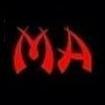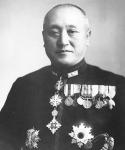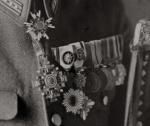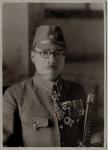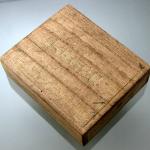-
Posts
22,214 -
Joined
-
Last visited
-
Days Won
68
Content Type
Profiles
Forums
Blogs
Gallery
Events
Store
Everything posted by JapanX
-
By the way, most japanese military man indeed were awarded only by the auspicious clouds. At least they wore only clouds Let me present you this little photo set.
-
This photo clearly states 3rd class of pillars of the state = 3rd class of sacred treasure 4th class of auspicious clouds = 4th class of rising sun But why pillars are quantitatively dominated by clouds? Maybe because pillars basically were issued for sivil service and clouds for military service ? I think this explanation is quite sound.
-
Well... What we`ve got here is clear case of violation of army approved publication called 'About Medals and Orders' (1942). The only way to explain this photo will be to suggest, that before 1942 recipients could wear both orders.
-
-
-
Well Rich, here is something to keep the fire I don't have a documented group in my collection that contains both orders (pillars and clouds) awarded to the same person. But we (thank godness!) don't need these documented groups. All we need (and that will be more than enough) is photo of such person with both orders. Luckily I have one such photo in my library of photo scans. I will post it tomorrow. Cheers, Nick
-
Well Gavin, as I've already said it earlier, there are no obvious problems with the quality pillars of the state. All specimens in all classes have superb enamel work. The most common problem with pillars in higher classes are 1) missing rivets on the reverse of 2nd class 2) missing pearls on 2nd class star (it maybe also be the case with 1st and 3rd class badges) 3) red enamel is exclusive feature of 1-3 and I only once saw damaged red enamel (on 2nd class star) and never on 1st and 3rd class badges Lower classes of pillars are usually problem free, only sometimes you can see specimens with damaged enamel in "pearls" or/and in central octahedron. So the answer will be "Not really". The quality is amazingly high even for allegedly "late" pieces. Happy new year Gavin! Cheers, Nick
-
Well. This piece certainly came from 1890-1910 period. Nice box, excellent patina and bow-style rosette! Congrats Arvydas and happy new year! Regards, Nick
-
Come on man! I didn't used that "priceless trash" expression I just expressed my point of view and of course there is a probability that these photos are for real. Didn't I told you that Anyway nice piece and happy new year Miro! Cheers, Nick
-
Silver kanjis, cardboard box ... No wonder Mori son believed it came from early 40s... Strange kinda order inside though... Diameter of rivets are to big (for my taste) for 40s (not to mention mint mark M!) Well, none of this is easy, hence the need to avoid jumping to conclusions too quickly! :lol:
-
Another great mystery quest... And of couse this could be just a nice gesture + opportunity to get rid of illiquid photos How much do you think these "no medals" photos will cost on phaleristic market? Just think about that. But then of course anything could happen in this world ... And this is actually our man... By what way, how you actually happen to date these pictures so precisely Cheers, Nick
-
Well ... Boxes, rosettes, photos... They are nice features ... No doubt about it. But no mire than nice... One could mess with them as along and as many times as he wish... And then there are orders. It's hard to mess (not to "mess up" one though ) with these things. That's why I think this way is safer one. Let me guess Miro - on the photos just the man without any medals. Right? Ok. Now please check this thread. http://gmic.co.uk/index.php/topic/31665-magnificient-ribbon-bar/page__p__298844__hl__bolgarin__fromsearch__1#entry298844 We've got medal bar + photo of holder. They are coincide. The orders are in full agreement with the age. Overall condition of the medals in the bar looks authentic. And still there were a lot of unjustified (from my point of view of course) doubts. What do you think we will get in our case (photos without actual medals and actual date around). Just think about that! Regards, Nick
-
You are right my friend on this one. I believe that the active time period for boxes with such kanji style is 1875-1935 (1934?/1936?). One sunny and frosty day (in the next year) I will make a big thread devoted to this question. An attempt of complete box classification. How does this sounds to you?
-
Well, Paul I guess this is another possible way, but personally I've never found it easier Kinda tricky one. Actually this "vein thing" have never worked for me And I have serious doubts about its efficiency. But maybe it's just me and wrong veins of my badges? Let's try it out. Could you please show how this "vein thing" should look like for Meiji/Taisho/Showa piece (in lower and higher classes)? Because I have troubles with veins of my pieces. I guess I just don't have all that your experience ("few hundreds" - I should really start counting mine encounters). Well... What I can say? They call me a beginner... :lol:
-
Well. I just rechecked central yellow octahedrons of all classes that I have (marked/unmarked/polished/unpolished/frozen...) and they are all convexly (slightly) done. So this is optical illusion. And yes, I mentioned this "more larger diameter dots rule" for allegedly "late-Manchokuo-made" pieces. This feature holds pretty well for lower classes and still holds for higher classes, but not that profoundly (the dots for late pieces in higher classes (1-3) are more "smudged" as some of my friends are saying - this is still visible I think in the pictures). But in reality you couldn't notice that feature unless you holding two pieces ("late" and "early") simultaneously in your hands. That's why I think blue line colore is easier way to distinguished between these two types. I think it is the most striking feature (along with red line) of "late" pieces. Anyone who actually has these orders could check my empirical (not really theoretical ) conclusions and see they actually work for himself (or herself ). But in one thing Paul is certainly right - this is not that easy. That's why this 5 pages long thread contains more information than any book or forum had before on this subject But of course without Richards generous help (not to mention the top notch statistical info!) and no less generous support of some my colleagues and friends this thread will be not that interesting and definitely not so rich in content. So I would like to thank them again for their support. All errors of course are mine
-
Well this is what I am thinking. From my subjective experience rosettes are very often mismatched (not even by style (this is "extreme mismatch", but by the color of the rosette material and the ribbon - don't tell me you didn't notice that quite often - and I am not talking here about obvious mismatch - the kind we see in case of your new 8th class treasure). Boxes are less often mismatch, but ... Let me put it this way ... This is not impossible act... Far from it! So sorry, but it's quite risky way. Especially in case of rosettes... Hirata boxes are just one of several variations... And we couldn't (well I coudn't:)) date them precisely. So boxes couldn't be dated precisely - every type have time variation in 5-10 years (at least!). And this is minimum! Only rosettes styles could be dated more a less precisely. But not rosette material. Nope. You couldn't dated it. Here and there and everywhere we see color mismatch between ribbons of the order and rosette in the box (even in case of early kites!). This because every holder could buy replacement ribbons and rosettes in specialized shops. This are my reasons for more than conservative attitude toward these two (boxes and rosettes) coordinates. But of course they are invaluable additional factors for more precise (or more confident) dating of the given piece. But the main factors are Manufacturing style Color enamel shades Ribbon type (watered/non-watered, colors, their shades, intensity, etc) In case of Miro 8th class my reasons were red stripes on the ribbon have typical for Meiji/Taisho intensive dark crimson color (not that pale-watered-red later WW II nonsense) and the color of the leaf is emerald green which is quite typical for Meiji/Taisho pieces. The box is helpful too It is like your box for the marked M 8th class of rising sun, which indicate that it came from Meiji/Taisho epoch. Of course the enamel shades are tricky (putting it mildly) thing when we are talking about attribution by photo material. But of course there are this mint mark M which I miss... In light of this evidence this piece may be from 1910-1936. This is for sure. Hope you will like this one Dieter Nick P.S. I should get a medal for post that long :lol:
-
Everything is mystery for you my friend I meant not the handwrighting style (there were as many handwrighting styles for these Meiji boxes as many calligraphists), but general kanji form. Of course, if that's what you mean Inside these general kanji form one could found different forms of boxes made of different materials. And you really should stop dating badges (or boxes) by rosettes types (pleading look + voice) Not very precise method - this is for sure. :lol:
-
Dieter do you really think that I am dating orders by the boxes or rosettes?! I am using only and only manufacturing style, color of enamel and ribbon color/material of this or that order. And by all these characteristics this badge has a very high probability to be Meiji era order. I believe that boxes and rosettes could be used only as additional and not crucial features. Using boxes and rosettes for dating orders ... Well, it is similar to using color to determine is this fruit mandarin or orange and ignoring the size of the fruit Cheers, Nick
-
Sorry Miro - I'd like to help you with the box, but I don't have extra one. I thought that this was a nice opportunity to post a better pictures of type 4 box. Cheers, Nick
-
Definitely this is a standart kanji style for Meiji epoch boxes and one of 3 variations of boxes for Meiji period.
-
Hmmm. I really like the ribbon... Nice one. And I think that larger mirror as sign of Meiji epoch for 7 and 8 classes will be a nice feature, but bigger diameter of jewels on perimeter will be even better Anyway this is for sure one nice oDld piece!
-
-
Well I think we all agree - this is same enamel pattern. Most profoundly this pattern could be seen in blue lines. That`s why I think the only really stable sign of allegedly "late" pieces is enamel shade of cental octahedrons (reverse pattern is not that stable, although pieces with M mark in higher classes (1-3) usually have polished reverses and visa versa). This is one and only thing that we really have for identification of "late" pieces. But as for today we have no hard proof evidence that exactly these pieces with such enamel pattern were created by Manchukou Mint. But if there indeed were pieces actually manufactured by Manchukou Mint, then these pieces are the first candidates for this role.


